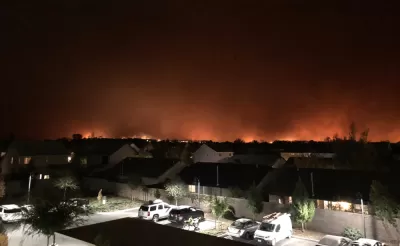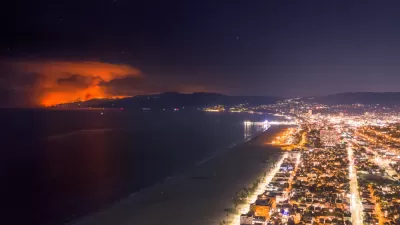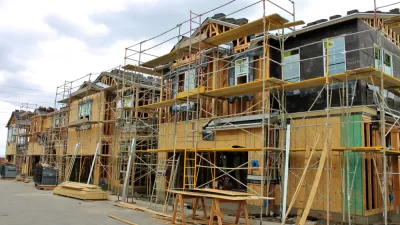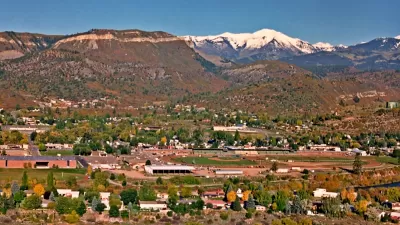An idea that is gaining support with the public as the state of California suffers through catastrophic fire season after catastrophic fire season is still a deeply difficult political proposition.

"The wildfires engulfing California this month have burned some of the same areas where other major fires have destroyed thousands of homes in recent years," writes Liam Dillon for the Los Angeles Times, but "no one has formally proposed robust limits on home building in areas at risk of wildfire."
There's been plenty of public hand wringing of the role of PG&E in what has been another disastrous fire season in California, as the utility responds to its role, and liability, in destructive fires of recent years by shutting down power to whole huge swaths of the state.
Despite the lack of conversation among political leaders about limiting home building in wildfire-prone areas, the idea seems to be catching on as fires repeatedly strike the same areas. Dillon reports:
In June, the UC Berkeley Institute of Governmental Studies released a poll that showed that three-quarters of California voters believe the state should restrain home building in areas at high risk of wildfires. The poll, prepared for The Times, revealed bipartisan support for such restrictions after deadly fires wiped out tens of thousands of homes across the state in the last two years.
The idea had strong support across party lines, geographic boundaries, generational divides, and disparate demographic groups. The state's political leaders, like Governor Gavin Newsom, are dismissive of the idea, however.
FULL STORY: The same areas of California keep catching on fire. What about limits on home building?

Study: Maui’s Plan to Convert Vacation Rentals to Long-Term Housing Could Cause Nearly $1 Billion Economic Loss
The plan would reduce visitor accommodation by 25,% resulting in 1,900 jobs lost.

North Texas Transit Leaders Tout Benefits of TOD for Growing Region
At a summit focused on transit-oriented development, policymakers discussed how North Texas’ expanded light rail system can serve as a tool for economic growth.

Why Should We Subsidize Public Transportation?
Many public transit agencies face financial stress due to rising costs, declining fare revenue, and declining subsidies. Transit advocates must provide a strong business case for increasing public transit funding.

A Visual Celebration of Manhattan’s Chinatown Elder Community, Through Food
Lanterns, cafeteria trays, and community connection take center stage in this stunning photo essay.

How to Make US Trains Faster
Changes to boarding platforms and a switch to electric trains could improve U.S. passenger rail service without the added cost of high-speed rail.

Columbia’s Revitalized ‘Loop’ Is a Hub for Local Entrepreneurs
A focus on small businesses is helping a commercial corridor in Columbia, Missouri thrive.
Urban Design for Planners 1: Software Tools
This six-course series explores essential urban design concepts using open source software and equips planners with the tools they need to participate fully in the urban design process.
Planning for Universal Design
Learn the tools for implementing Universal Design in planning regulations.
City of Santa Clarita
Ascent Environmental
Institute for Housing and Urban Development Studies (IHS)
City of Grandview
Harvard GSD Executive Education
Toledo-Lucas County Plan Commissions
Salt Lake City
NYU Wagner Graduate School of Public Service





























